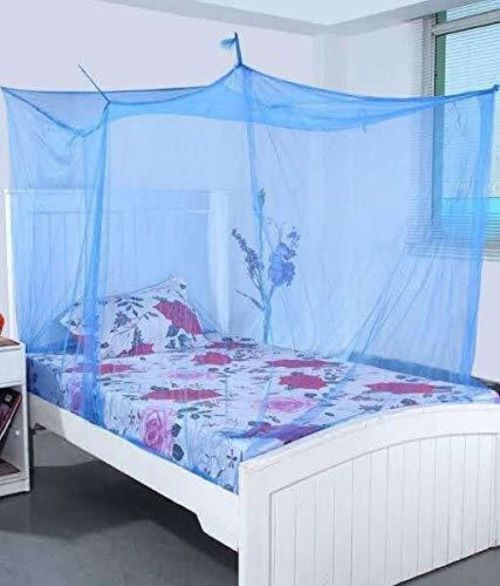A mosquito net is a type of meshed curtain that is circular shaped wrapped over the bed or in a sleeping area. This mosquito nets are protectors against bites and stings from mosquitos and other pests inserts and these nets are used to protect us against diseases. For example, it prevents diseases like malaria, dengue, and yellow fever by covering ourselves from pest inserts. Mosquito nets are mainly used in home textiles material, military uniforms, vegetables storage bags etc. The mosquito net is to be finer to avoid allowing mosquitos into the inner area. This can also be avoided by pretreating mosquito repellents on the outer layer of net. The first record of malaria-like symptoms occurred as early as 2700 BCE from China. The vector for this disease, specifically avian malaria, was not identified until 1897 when Sir Ronald Ross identified mosquitoes as a vector for malaria.
Conopeum or Conopium (Ancient Greek: κωνώπιον or κωνόπιον or κωνωπεῖον) was a mosquito-curtain. It was made to keep away mosquitoes and other flying insects. It took its name from κώνωψ, which means mosquito in Greek, and is the origin of the English word canopy. These curtains were especially used in Egypt because of the mosquitoes which infest the Nile. The Scholiast on Juvenal mention that at Rome they were called cubiculare. They are still used in Greece and other countries surrounding the Mediterranean.
Mosquito netting has a long history. Though use of the term dates from the mid-18th century, Indian literature from the late medieval period has references to the usage of mosquito nets in ritual Hindu worship. Poetry composed by Annamayya, the earliest known Telugu musician and poet, references domatera, which means "mosquito net" in Telugu. The use of mosquito nets has dated to prehistoric times. It is said that Cleopatra, the last active pharaoh of Ancient Egypt, also slept under a mosquito net. Mosquito nets were used during the malaria-plagued construction of the Suez Canal...
